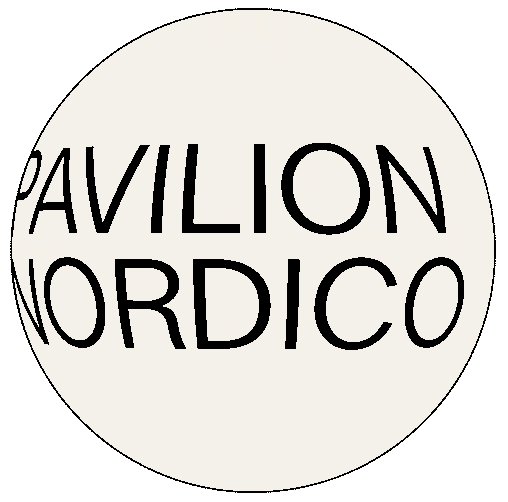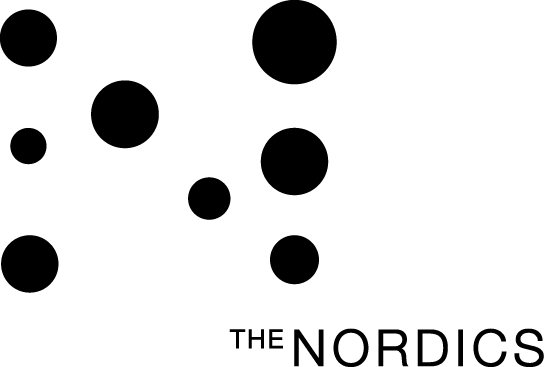INTRODUCING RIES ESTUDIO
21.11.2020
For the PN1 design residency program and the upcoming exhibition, PAVILION NORDICO and the young Nordic designers worked closely with Buenos-Aires-based design studio RIES.
PAVILION NORDICO team member Nele Ruckelshausen spoke with RIES co-founder Marcos Altgelt about the studio's history and their experience collaborating on the PN1 project.
How and with which purpose did RIES Estudio come together?
Me and Tasio Picollo, my partner, met while working at two different design studios whose bosses were close to each other. At some point we started working together on what became our first collection, in a small workshop that was set in a garage. That was the beginning of our own design studio. Today, after five years, we have geown to the point of having a team of twelve people, a much bigger workshop and a showroom. We strive to design and produce pieces locally that seek to elevate the experience of the everyday living and are also up to international quality standards. It is also of our interest to create environments and interior design projects in which our pieces can coexist to find a proper atmosphere to live in.
What would you say characterizes Buenos Aires' current design scene?
A couple of years ago, when we started the studio, the design scene looked very different from how it looks now. Now it seems that there's a lot more people shedding their creative fears and hesitatitons, and there's a new studios emerging, always in a very DIY way. From our limited experience and also from what we can see from the studios that precede us, there's no other way to do design in Buenos Aires if you actually don't MAKE it. Heritage in our case is a tricky thing because compared to other nations, we are a pretty young one, and also a mix of various different ones. There are crafts practices such as glass blowing, sand-cast aluminum founding, amongst others, or even woodworking, that us as a young design studio try to incorporate as a part of our work.
How did your partnership with PAVILION NORDICO come about?
PAVILION NORDICO co-founder Sara and the guys from Kiosk Studio, came to visit one of our Quick Tiny Shows during the first edition of their project. We first heard the name PAVILION NORDICO when Bettina Nelson, the first designer to do the residency in 2019, approached us to help her build her chair. She finally ended up working with our workshop partner Loli Mallea from Sur del Cruz. We've been doing these experimental shows in collaboration with Juan García Mosqueda since 2018 and one of the main aspects that appeals us is the fact of being the relationship with the "first world" not unilateral anymore. We went to show our work many times abroad in our short career, but having people from the US and Europe come to make their pieces and show them in Argentina feels quite unique. In the case of Scandinavia in particular the interest was focused on working with people in whose lives design is actually something inherent.
What surprised you the most about working with the young PN1 designers?
Probably what surprised me the most was their capacity to adapt so quickly to a different new and maybe sometimes complicated place to produce that is our country. Even considering that we helped them all during the process and in the communication with the different factories and so on, they managed to understand the possibilities and what to do with the time given right away.
What do you feel the partners in Buenos Aires took away from this collaboration?
It's not so easy to speak on others behalf but I'm guessing that the ones that more benefit took from this collaboration were us, Juan, and Sur del Cruz, just because the fact that we could all be more in touch with the designers than the factories that worked one or at the most two days with them. Probably for the people in the factories this one or two days felt like an oddity, as much as it is when they work with us on stuff that's not what they work on everyday. But again, for us being in close contact with all of them, being able to discuss ideas, help them materialize them, see their approach, and share idle time, was a very great experience in many ways, and hopefully will happen again in the future.
What do you think the future of the Argentine design world looks like?
Needless to say that we're living in a super weird moment globally, which is in a way funny (or not so funny...) because I can't remember a time where almost the whole planet was equally touched by the same circumstance. It's hard for me to think of Argentina as something isolated from the rest of the world during this global pandemic. Alas, from what I can perceive and intuit, I see design studios, brands, and companies working more closely within their communities or cities. As we weren't able to assist to design shows and fairs during this time, we were forced to find a way to build an agenda locally, making collaborations with colleagues, and so on. I think this tendency of not having the pressure or obligation to show abroad is something really positive for rising design communities. When this Corona era ends (which it will, at some point), I hope we'll stick to some of these behaviours even as the world goes back to normal.
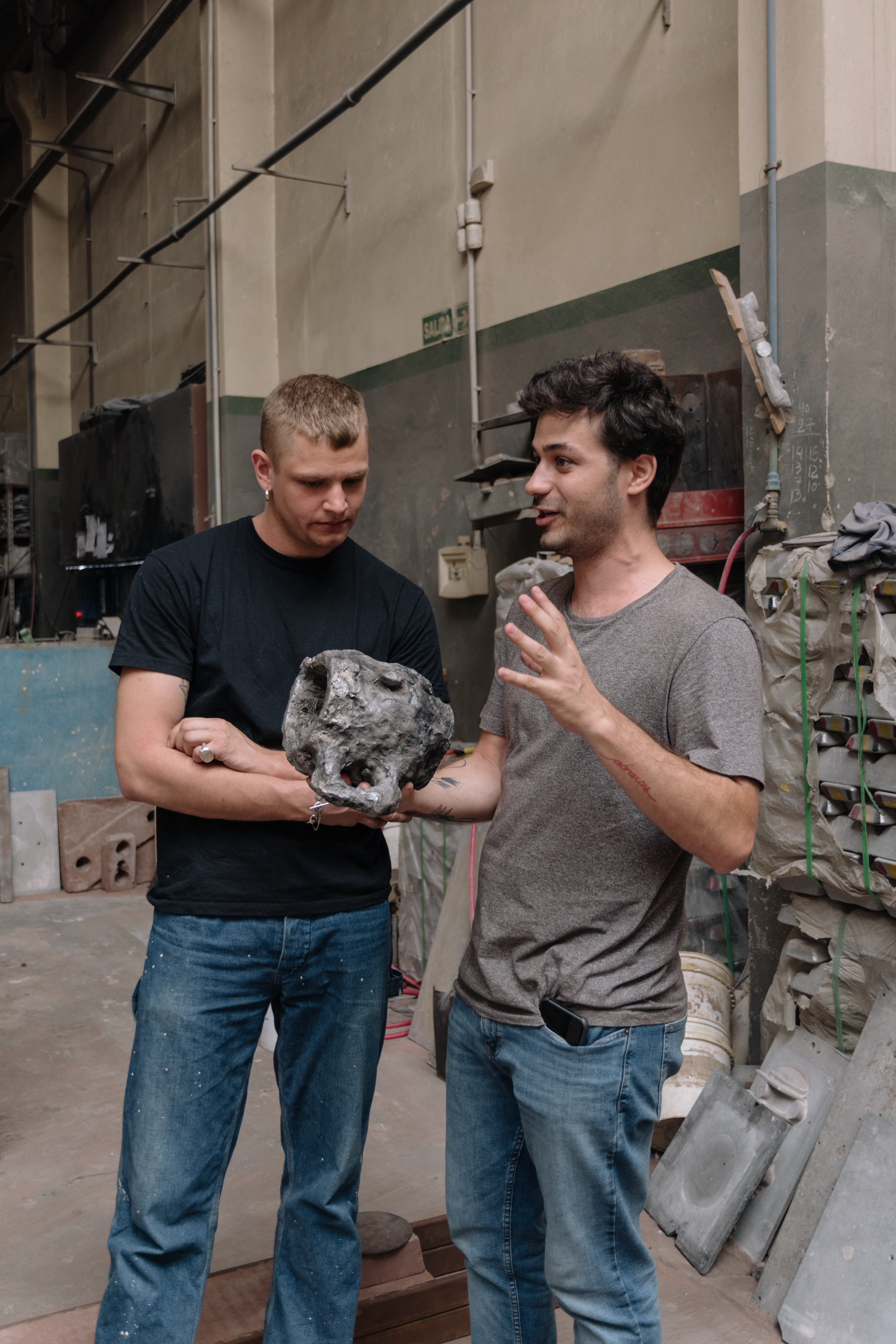
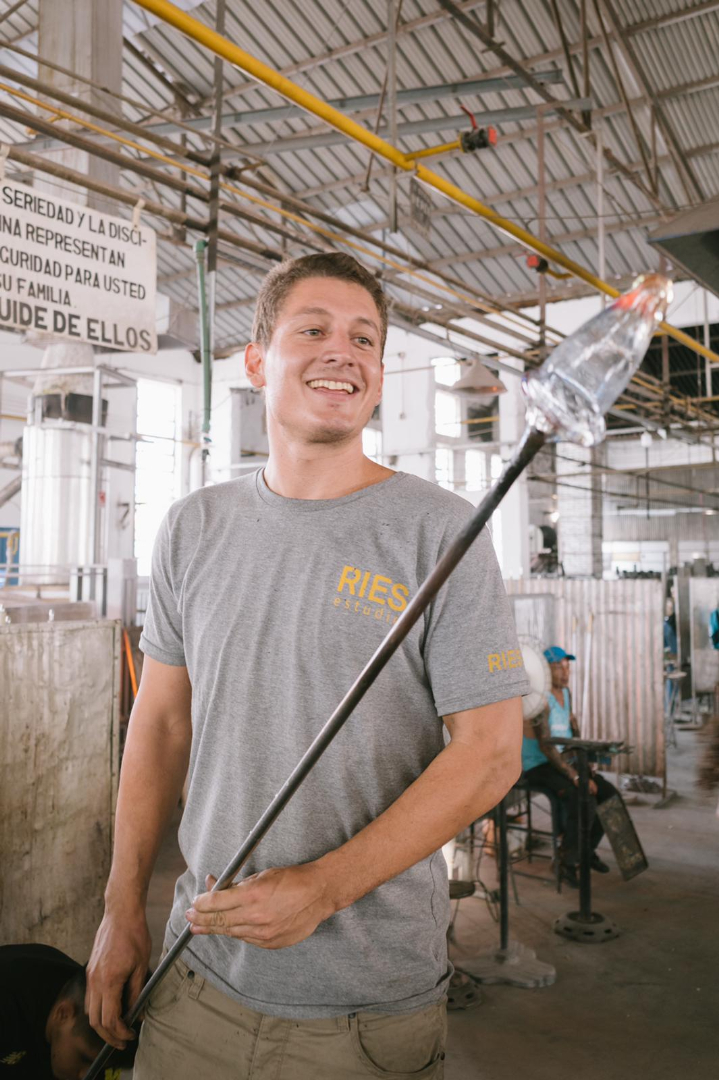
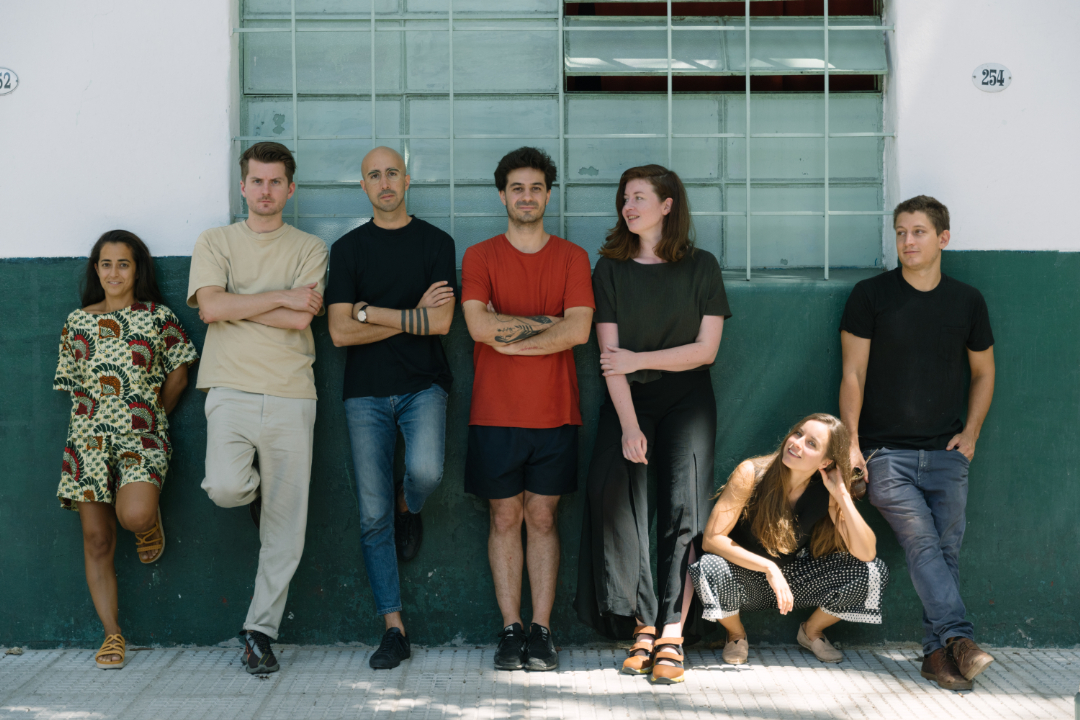
First Photo: RIES co-founder Marcos Altgelt & PN1 design resident Oliver Sundqvist photographed in a foundry in Buenos Aires.
Second Photo: RIES co-founder Tasio Picollo at the Crystaleria San Carlos.
Third Photo: Marcos Altgelt and Tasio Picollo with PN1 team and partners.
All photos by Dagurke, 2020.
